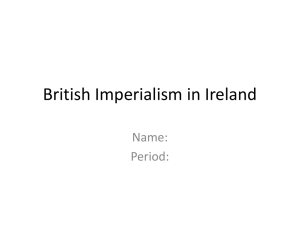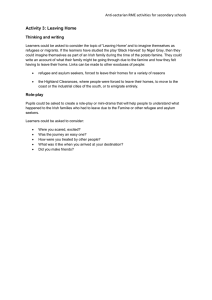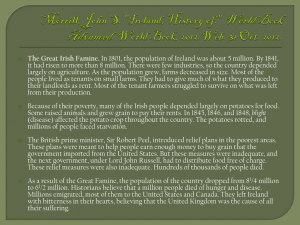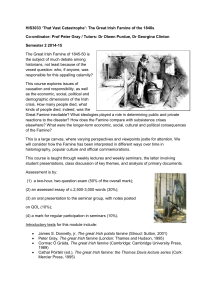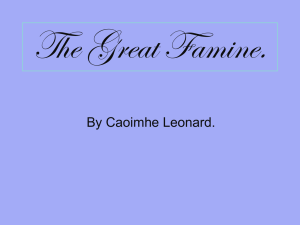potato crop six times over a span of seven years... crop failure did not lead to famine in other European... Activity 7. Why was there a famine in Ireland in...
advertisement
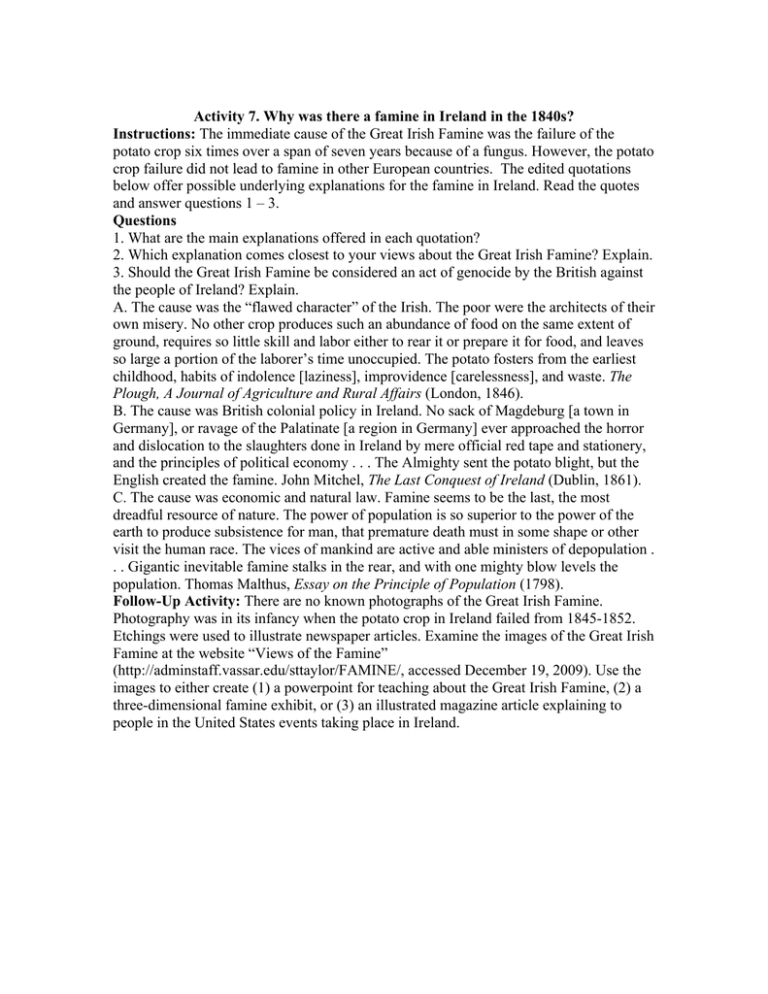
Activity 7. Why was there a famine in Ireland in the 1840s? Instructions: The immediate cause of the Great Irish Famine was the failure of the potato crop six times over a span of seven years because of a fungus. However, the potato crop failure did not lead to famine in other European countries. The edited quotations below offer possible underlying explanations for the famine in Ireland. Read the quotes and answer questions 1 – 3. Questions 1. What are the main explanations offered in each quotation? 2. Which explanation comes closest to your views about the Great Irish Famine? Explain. 3. Should the Great Irish Famine be considered an act of genocide by the British against the people of Ireland? Explain. A. The cause was the “flawed character” of the Irish. The poor were the architects of their own misery. No other crop produces such an abundance of food on the same extent of ground, requires so little skill and labor either to rear it or prepare it for food, and leaves so large a portion of the laborer’s time unoccupied. The potato fosters from the earliest childhood, habits of indolence [laziness], improvidence [carelessness], and waste. The Plough, A Journal of Agriculture and Rural Affairs (London, 1846). B. The cause was British colonial policy in Ireland. No sack of Magdeburg [a town in Germany], or ravage of the Palatinate [a region in Germany] ever approached the horror and dislocation to the slaughters done in Ireland by mere official red tape and stationery, and the principles of political economy . . . The Almighty sent the potato blight, but the English created the famine. John Mitchel, The Last Conquest of Ireland (Dublin, 1861). C. The cause was economic and natural law. Famine seems to be the last, the most dreadful resource of nature. The power of population is so superior to the power of the earth to produce subsistence for man, that premature death must in some shape or other visit the human race. The vices of mankind are active and able ministers of depopulation . . . Gigantic inevitable famine stalks in the rear, and with one mighty blow levels the population. Thomas Malthus, Essay on the Principle of Population (1798). Follow-Up Activity: There are no known photographs of the Great Irish Famine. Photography was in its infancy when the potato crop in Ireland failed from 1845-1852. Etchings were used to illustrate newspaper articles. Examine the images of the Great Irish Famine at the website “Views of the Famine” (http://adminstaff.vassar.edu/sttaylor/FAMINE/, accessed December 19, 2009). Use the images to either create (1) a powerpoint for teaching about the Great Irish Famine, (2) a three-dimensional famine exhibit, or (3) an illustrated magazine article explaining to people in the United States events taking place in Ireland.

